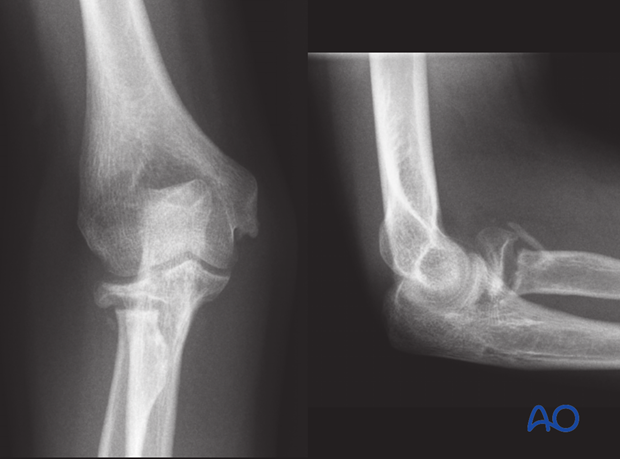Complications of radial head and neck fractures
1. Avascular necrosis (AVN)
The radial head is predominately intraarticular, covered with cartilage and without muscle attachment.
A displaced fracture of the radial neck relies on small vessels in the intact periosteum to supply the radial head.
This periosteum must be preserved when performing closed or open reduction techniques. Dissection with open reduction may further threaten the blood supply and gentle closed reduction is preferred, if possible, even for very displaced fractures.
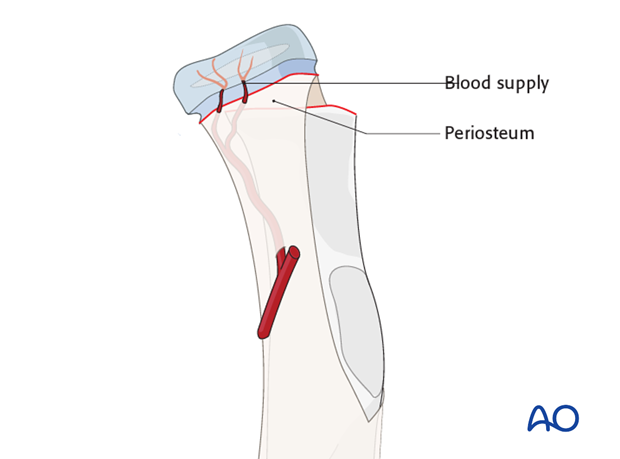
The degree of displacement in some fractures is such that all soft-tissue attachments are ruptured and avascular necrosis is inevitable.
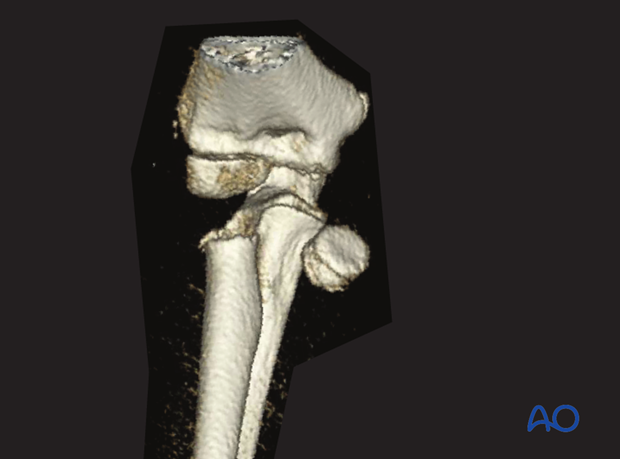
The avascular bone will soften and reform leading to an enlargement of the radial head, which restricts pronation/supination.
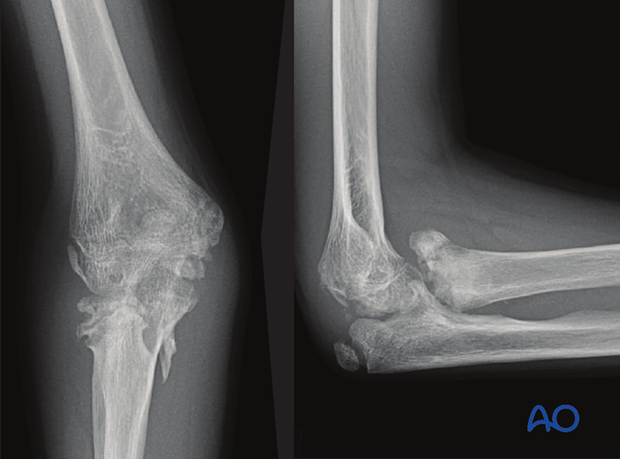
Early active assisted range of motion helps to preserve elbow function.
Passive manipulation is contraindicated.
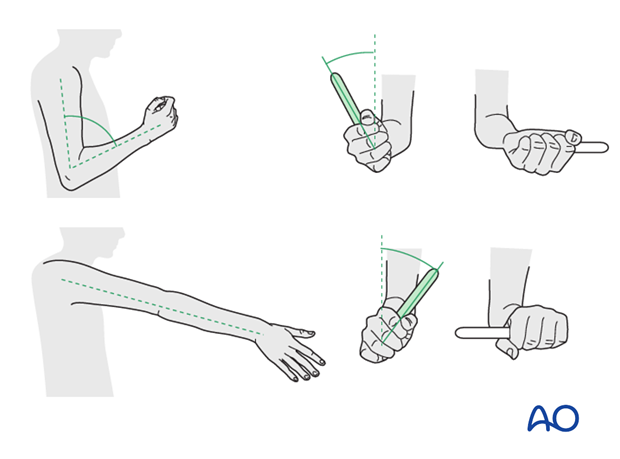
2. Elbow stiffness
Elbow stiffness is easier to prevent than to treat. Stable fixation of periarticular fractures that allows early motion is recommended.
- A periarticular elbow fracture without dislocation can begin range of motion exercises at 3 weeks.
- Earlier rehabilitation is possible with stable internal fixation.
- An elbow that has been dislocated is at greatest risk of stiffness. Active assisted range of motion exercises should be started as soon as swelling and comfort allow and not delayed for longer than 2 weeks.
Early treatment of posttraumatic elbow stiffness includes:
- Active assisted/resisted range of motion
- Physiotherapy
- Serial casting
- Dynamic splinting
The safest way to achieve active assisted and/or resisted range of motion in children is to teach the child to use the other arm to stretch the affected elbow.
An adult passively stretching the child’s elbow can easily cause increase scarring and contracture.
Late treatment may include operative release of capsular contractures followed by the above modalities with or without continuous passive motion machines.
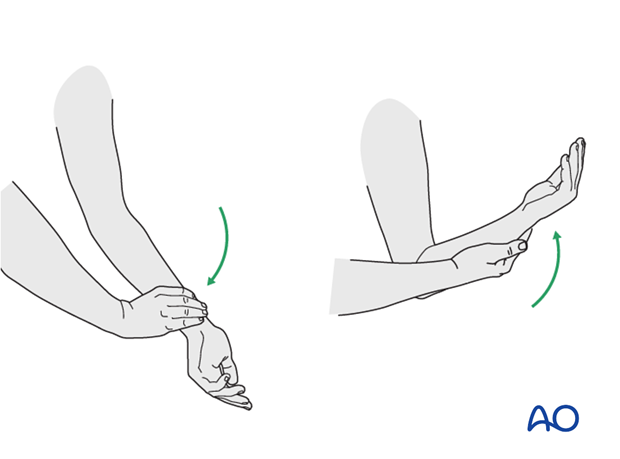
3. Radial neck malunion
Malalignment of the proximal radius or thickening of the radial neck following fracture healing can reduce pronation/supination. It can also lead to cam motion with gradual subluxation of the radial head.
Accurate initial reduction will minimize this complication. Later correction of malunion is challenging due to limited means of stabilizing the bone after osteotomy.
A severe radial head or neck deformity may be treated with radial head excision. This is not recommended during childhood as it can result in a painful wrist with relative shortening of the radius and ulnar plus deformity.
